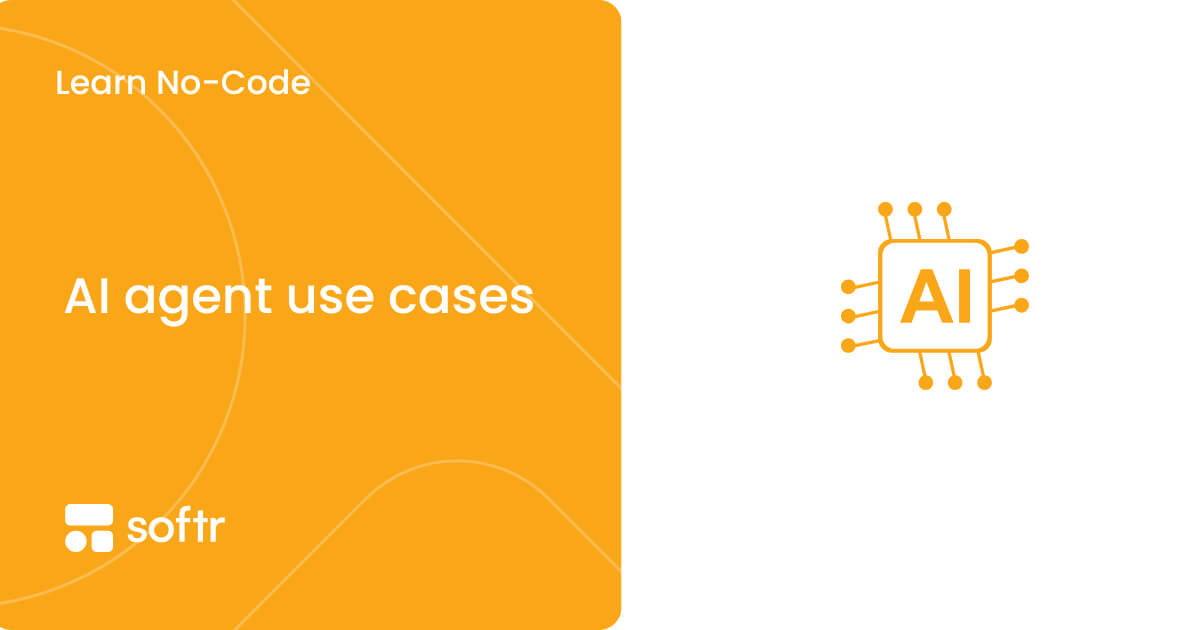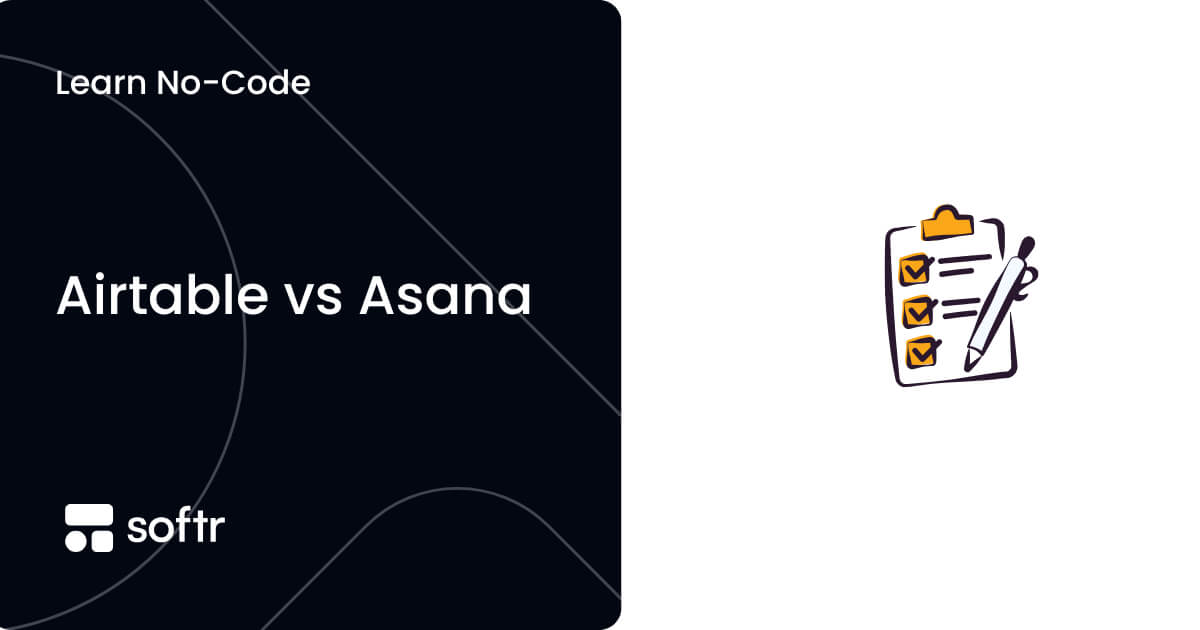What is Airtable and how does it work? (2025 beginner’s guide)

[.blog-callout]
💡 TL;DR
- What Airtable is: A spreadsheet-style front end on a relational database: store, link, and share data.
- How it’s organized: Each base holds tables, fields, and records; switch views (grid, Kanban, calendar, Gantt) to work the way you need.
- AI + automation: Omni and Field Agents can create tables, write formulas, and run workflows from plain-language prompts.
- Power tools: Automations, Extensions, Interface Designer, and Insights cover reporting, dashboards, and collaboration inside your base.
- Going further: Softr turns Airtable data into secure portals, CRMs, and other apps—role-based access, real-time updates, no code.
[.blog-callout]
If you’ve ever tried managing projects, clients, or inventory in spreadsheets, you know how messy it can get. Formulas break, columns multiply, and finding the right record takes longer than it should. That’s usually when teams start looking for tools that offer more structure to manage data, and Airtable is one of them.
It looks like a spreadsheet, but underneath, it’s a real database built to keep your data clean, interconnected, and easy to manipulate.
Teams use it to plan projects, track clients, manage content, and automate the bits that usually slow them down.
In this guide, we’ll unpack what is Airtable, how it works, and why so many businesses use it to replace messy spreadsheets with workflows that actually scale.
What is Airtable?
Airtable is a cloud-based platform that blends the familiarity of a spreadsheet with the structure of a relational database. That means you can store, link, and manage data all in an interface people are familiar with.
What are the benefits of Airtable?
Airtable makes it easier for teams to organize, share, and act on their data. Key benefits include:
- Linked records: Connect data across different tables so information stays structured and in sync. When you link records, Airtable automatically creates a mirrored connection in both tables without the need to duplicate entries or manually map relationships.
- Lookups and rollups: Once records are linked, you can pull related data (like client names or project totals) from other tables using lookup and rollup fields. This helps you summarize, count, or reference connected information automatically.
- Collaboration: Assign tasks, share updates, and manage access with defined roles and permissions.
- Familiar interface: Spreadsheet-style design makes onboarding quick for anyone used to Excel or Google Sheets.
- Ready-made templates: Start fast with templates for CRMs, content calendars, or project tracking, then customize as you go.
- Flexible views: Switch between grid, Kanban, calendar, Gantt, or form views to match how your team works, without having to duplicate the data.
- Built-in simple automations: Set triggers and actions to handle repetitive steps, from sending reminders to updating records.
- Transparent version history: See who changed what and when, so collaboration stays clear and accountable.
- AI assistance: Use Omni and Field Agents to generate tables, formulas, and summaries from natural language. AI features are still rolling out across plans, and some, like advanced automations or Field Agents, may use more credits or require workspace upgrades.
{{cta-1}}
But how’s Airtable different from common spreadsheets as a database? Let’s compare and find out.
Databases vs. Spreadsheets
If you’ve managed work in Excel, Google Sheets, or any other spreadsheets, you know how fast things can get messy. One formula breaks, someone overwrites a cell, and suddenly, the data you rely on isn’t reliable anymore.
Databases, on the other hand, are built to handle much more data, connect information across tables, and keep things consistent even as your team grows.
Spreadsheets and databases might look similar at first (rows, columns, and grids), but they solve different problems.
Let’s look at what really separates the two:
What is Airtable used for?
Teams use Airtable to organize, connect, and automate their day-to-day work. Its spreadsheet-like interface makes it easy to get started, while its database structure keeps everything consistent as your data grows.
Here are some of the most common ways small and mid-sized businesses use it today:
- Client & customer relationship management: Track clients, leads, and projects in one place, link related records, and share updates with your team in real time.
- Project tracking: Build visual timelines, assign tasks, and use views like Kanban, Calendar, or Interfaces to keep projects moving.
- Marketing campaigns: Plan and execute campaigns with content calendars, approvals, and AI-powered automations to keep launches on schedule.
- Product operations: Coordinate product launches or track inventory, suppliers, and budgets across departments.
- HR & team management: Manage hiring pipelines, employee directories, and onboarding checklists—all with permissions that keep sensitive data private.
And now, with Airtable Omni and Field Agents, you can use AI to generate tables, write formulas, and analyze data automatically. These features are still rolling out and may vary across plans, but they mark a step toward making Airtable easier to set up and maintain at scale.
[.blog-callout]
To get a better view of what's possible with the cloud-based tool, here are the most popular Airtable templates used by different departments and teams.
[.blog-callout]
How to use Airtable: Key terms & use cases
As a beginner, the vast amount of must-know Airtable terminology can be overwhelming. Here's what you need to know to start using Airtable effectively.
Bases
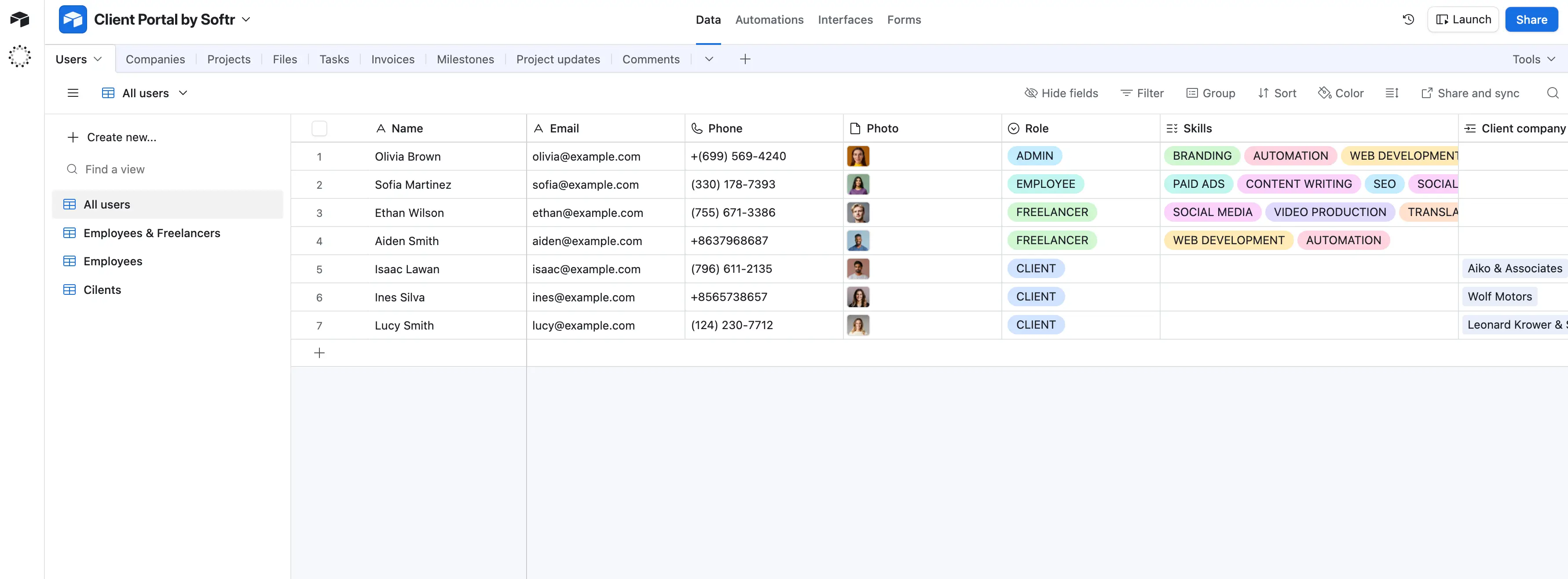
A base in Airtable holds all the information for a single project or process. It’s made up of connected tables that track different parts of your work, like companies, tasks, and invoices, and link together where they overlap.
You can start from scratch or use one of Airtable’s templates for things like content calendars, project trackers, or event planning.
Views

Each base supports multiple views, such as grid, calendar, Kanban, Gantt, and more, so you can look at the same data from different angles. They allow you to configure how you view the data in each table.
Tables

Similar to spreadsheets, we create tables to store and manage data. Each table stores one type of information, like users, companies, projects, and files, and can connect to other tables within the same base.
For example, the “Users” table might include separate tables for employees, freelancers, and clients, each with records that track names, roles, contact details, and skills. Those tables can connect, so you can see which freelancer worked on which project or which clients are assigned to which account manager.
If you’ve used spreadsheets before, the layout will feel familiar — rows, columns, and fields, but with more structure. You can define field types, link records between tables, and switch between grid, Kanban, or calendar views to see data from different angles.
Each base can hold multiple tables that work together to keep your information organized, connected, and easy to manage as your projects grow.
To create a new table, click Add or import and either build one from scratch or import data from another base, CSV, Google Sheets, or integrated tools.

Fields
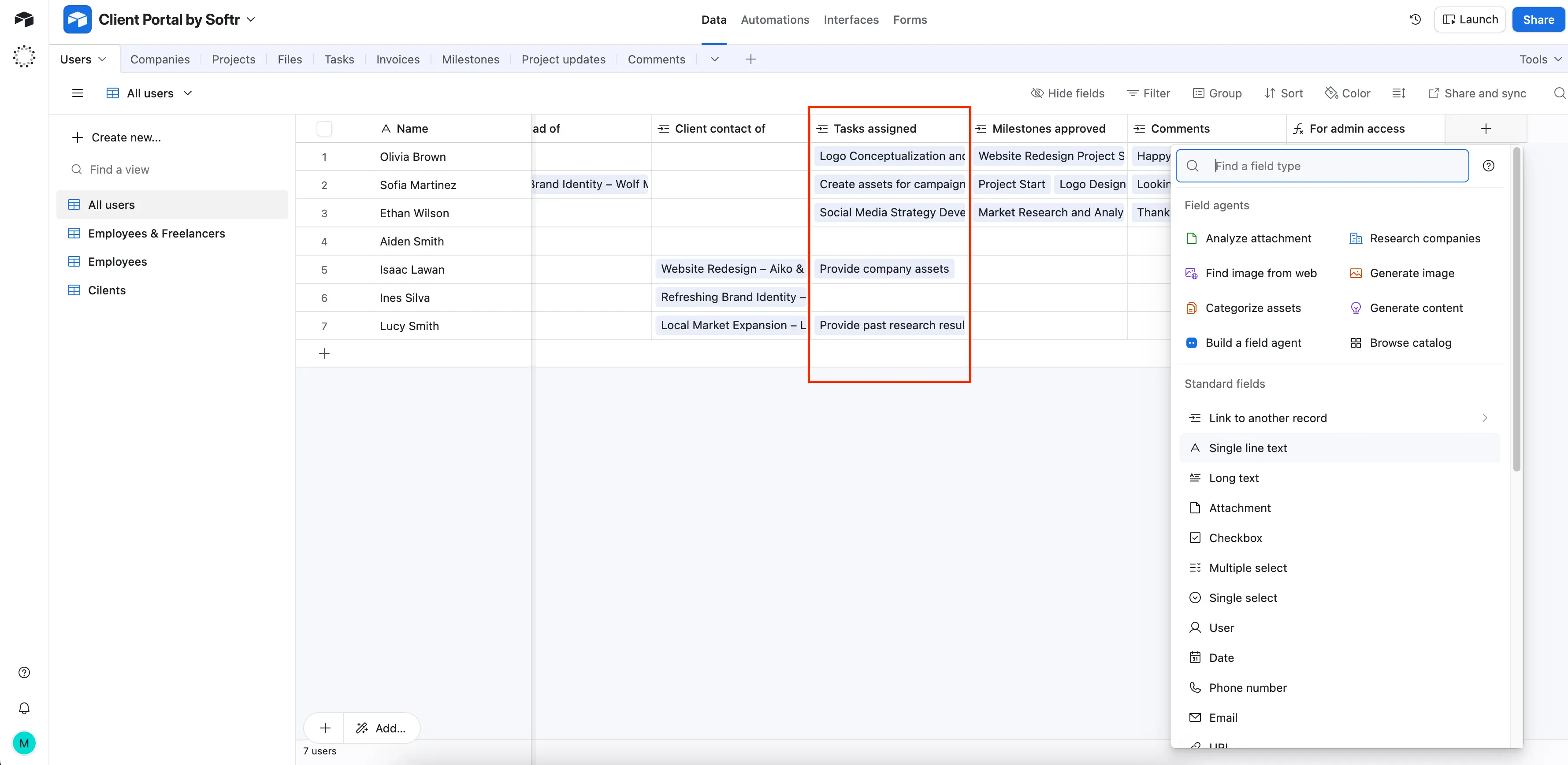
Fields are like the columns in a spreadsheet, but smarter.
Each field defines the type of data a column can hold, helping you keep information structured and consistent across your tables.
You can choose from over 30 field types, including:
- Single-line text and long text for written entries
- Date, checkbox, and attachment fields for files or images
- Linked record fields to connect data across tables
- Formula and rollup fields to calculate or summarize values
- AI and lookup fields for automating insights and pulling related data
This flexibility means your tables can store nearly any kind of information—from client contact details to project budgets—without losing clarity or control.
Records
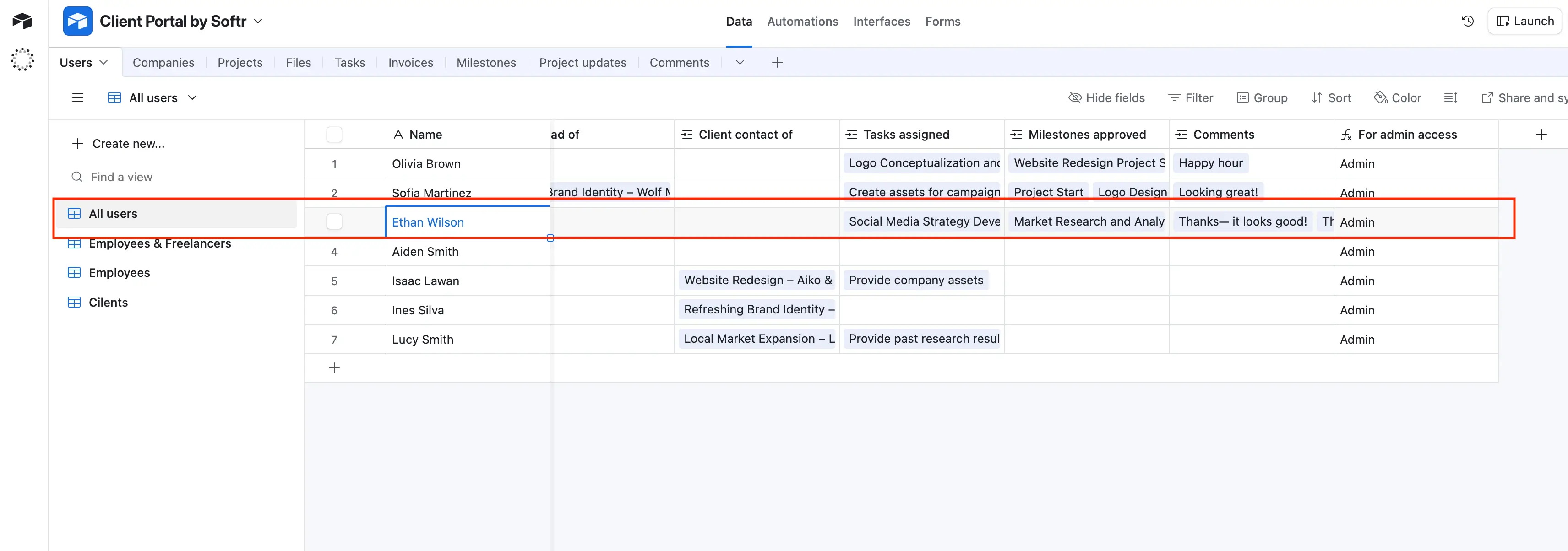
Records are the rows in your Airtable tables, each representing a single item, like a client, project, or task. Every record stores its details across different fields, such as name, email, date, or status.
You can add, expand, edit, or import records directly within a table or view. Airtable automatically updates connected records across your base, keeping everything in sync.
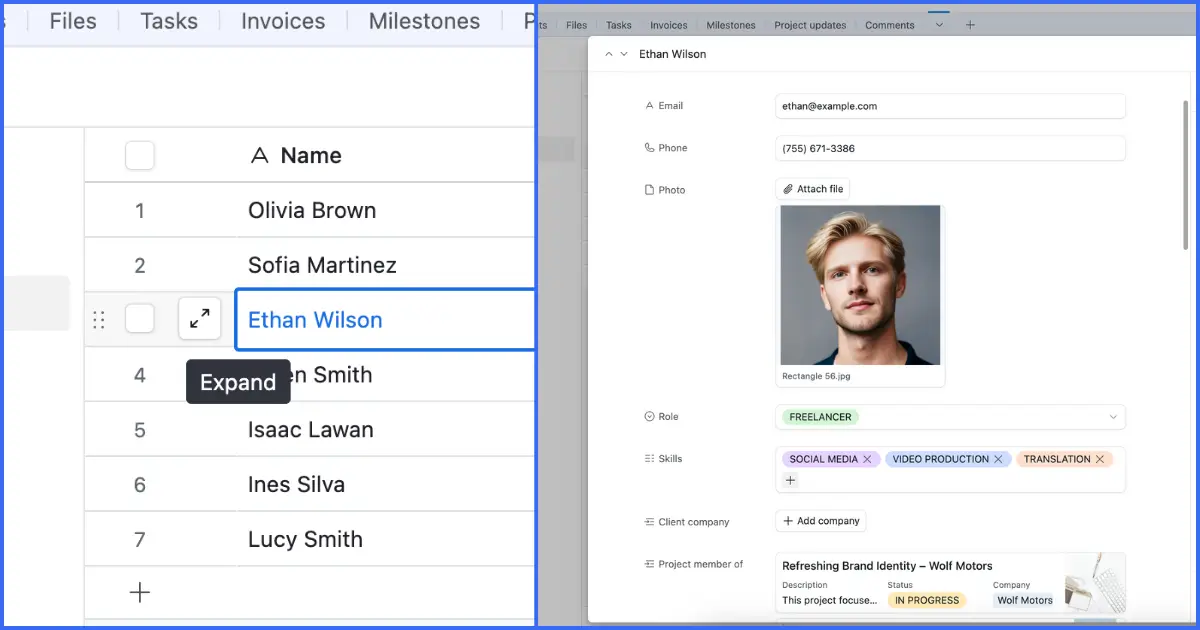
Because Airtable is a relational database, records in one table can also link to records in another.
For example, an employee record in your “All users” table can connect to their department in the “Teams” table, so data stays consistent without duplication.
Advanced Airtable features
Once you’ve built a few bases and understand the basics, Airtable offers advanced tools that make it easier to automate work, customize views, and analyze data.
- Omni (AI):Airtable’s built-in AI assistant that helps you create tables, fields, and workflows from plain language.
- Automations: Let you set up triggers and actions, like sending alerts when a project’s status changes or creating records automatically from form submissions.
- Extensions: Add extra functionality such as charts, reporting, or integrations directly inside your base.
- Interface Designer: Turn complex data into shareable dashboards or focused views, so collaborators see only what’s relevant to them.
- Airtable Insights: Analyze how your team uses bases and spot ways to improve efficiency or fix errors.
- Record templates: Speed up recurring projects by reusing prefilled record structures instead of starting from scratch.
Airtable integrations
You can synchronize Airtable with popular apps and automate repetitive tasks. Using automation in Airtable, you can:
- Sending emails using Airtable
- Syncing Airtable to Google Calendar
- Updating records based on changes in other applications
- Sending messages in Slack/Microsoft Teams
- Scheduling tweets
- Registering payments using Stripe
- Managing files with Dropbox/Box
Softr: turn your Airtable data into full-stack business apps
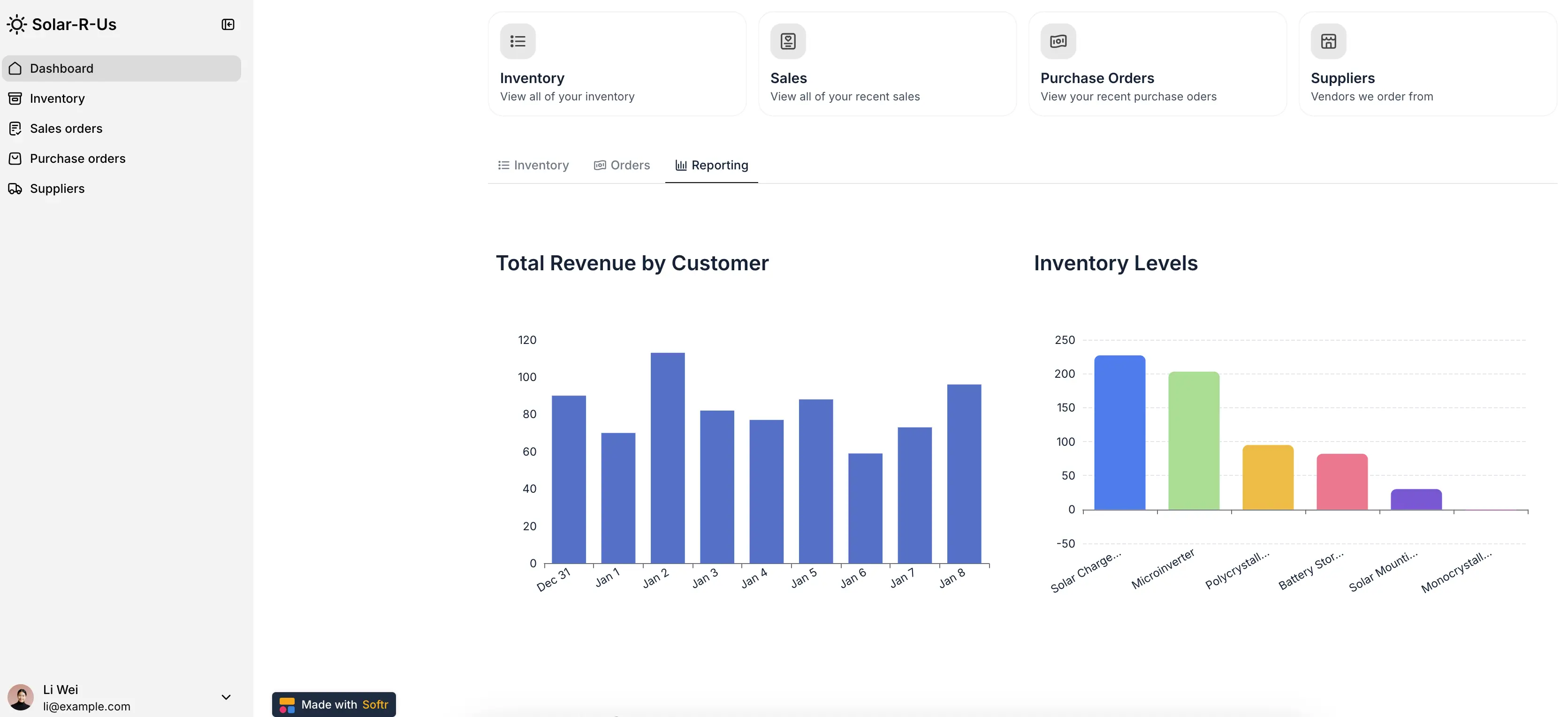
If Airtable helps you organize your data, Softr helps you do more with it.
Softr turns your Airtable bases into secure, interactive business apps, like client portals, CRMs, or internal tools, without writing code. It bridges the gap between structured data and how people actually use it.
With Softr, you can:
- Build custom frontends for your Airtable data: complete with forms, filters, charts, and permissions.
- Securely control access for every user, from clients and partners to internal team members.
- Automate two-way updates between Softr and Airtable in real time.
- Add AI assistance with built-in tools like Ask AI and Database AI Agents that summarize, categorize, or enrich records.
- Scale beyond Airtable’s limits with Softr Databases — Softr’s native relational database that integrates seamlessly with Airtable import, native automations(launching really soon), and external APIs.
You can start from a ready-made template for CRMs, inventory tracking, or client portals and customize it for your workflow.
Softr Databases best features
- Effective field types: It has diverse field types such as short text, currency to linked records, rollups, and lookups: you name it!
- Custom views: Create custom views using built-in filters, sorting, and field visibility tailored to different teams and workflows.
- Airtable import: Easily migrate data from Airtable into Softr Databases in a few clicks (relational fields included!).
- Native Zapier, Make, and n8n integrations: Set custom triggers and actions with Softr Databases + Zapier, Make, or n8n, and keep all your tools in sync (native automations coming very soon).
- Ability to create full-stack business apps: You can turn your data into secure client portals, project management systems, inventory trackers, and more (all in one place).
- Database AI Agents: Automatically enrich records, update data, or pull live insights from the web in your database.
- Public API: Push data from any tool with a REST API into Softr Databases. Migrate from legacy systems, sync live CRM data, and centralize scattered information.
- Database templates: Get started quickly with ready-made database templates for CRMs, inventory, client portals, etc.
Here are some Redditors attesting to the Softr Databases best features

Softr Databases pricing
Softr offers flexible pricing, including a generous free plan. Softr Databases are available on all Softr plans with some record limits.
- Free for up to 10 users per month and 1000 records per database (5000 records per workspace)
- Paid plans start at $49/month for 20 users and 50K records per workspace (when billed annually)
- Professional: Starts at $139/month for 100 users and 500K records per workspace (when billed annually)
- Business: Starting at $269/month for 500 users and 1M records per workspace (when billed annually)
- Custom plans for enterprise customers
Some more Redditor insights regarding Softr Databases pricing:

Building apps & interfaces with Airtable vs Softr: Which one to pick?
Airtable Portals work well for internal data views. But when you need client-facing apps, custom permissions, mobile readiness, and cost efficiency, Softr gives you the flexibility to scale without extra complexity.
Why teams choose Softr over Airtable:
- Avoid per-seat pricing: Airtable charges ~$20–$45 per user. Softr plans start at $49/month for 20 users, scaling by usage (not seats), so you can invite clients or partners without extra costs.
- Go beyond record limits: Airtable caps records per base (120k on most plans before Enterprise), and performance drops as datasets grow(even often before meeting record limits). Softr Databases handle up to 1M+ records per workspace, with faster load times and no API bottlenecks.
- Control access precisely: Airtable’s permission model is basic. Softr lets you define granular rules: control visibility at the field, record, or role level for clients, vendors, or internal teams.
- Design freely and brand it. Airtable’s Interface layouts are limited. Softr lets you fully style your app, add branding, and go white-label on higher plans.
- Build full-stack apps, not just interfaces: Add logins, multi-step forms, logic, and automations without code.
[.blog-callout]
💡 When content agency Animalz needed to manage 30+ freelancers, they built a Softr portal on top of Airtable—giving each writer secure access, automated assignment workflows, and a clean, branded interface.
The result? $700+ saved per month, faster onboarding, and zero manual updates.
[.blog-callout]
More on what Softr Databases are capable of in the video below!
Related resources lineup:
- Supabase vs Airtable comparison guide
- Airtable pricing & plans overview
- Step-by-step Softr Databases migration guide
- How Softr compares to Airtable Interface Designer
- How Urban's Group increased productivity with Softr
From organizing data to building with it
Airtable gives teams a powerful way to structure and connect data without needing to code. But once you’re ready to turn that data into something flexible and scalable, Softr steps in.
With Softr, your Airtable base becomes more than a database: it becomes a living system. You can build secure, custom client portals, internal tools, or other apps on top of your data, complete with AI assistance, real-time sync, and tailored access control.
And if you ever hit Airtable’s limits? You can move to Softr Databases in just a few clicks, keeping the same structure, views, and flexibility, but gaining scalability and native AI features.
👉 Start with your data. Build with Softr. Scale without code. Explore Softr Databases →
Frequently asked questions
- What is Airtable AI?
Airtable AI is the generative AI layer built inside Airtable. You can summarize text, categorize records, translate content, generate drafts, or route tasks automatically based on your data.
- What is the best alternative to Airtable?
If you’ve outgrown Airtable or need more flexibility, a few tools stand out. Softr is the best choice if you want to build client portals, CRMs, or internal tools directly on top of your Airtable data with user permissions, AI, and full app functionality.You can explore more options in our Airtable alternatives guide.
- What is a rollup field in Airtable?
A rollup field aggregates values from linked records in another table (e.g. sum or average of numbers). You choose which linked records and fields to roll up, then apply a function like SUM, COUNT, AVERAGE, or others.
- What is a workspace in Airtable?
A workspace is a container for bases, where you group related projects or teams. You might have one workspace for Marketing, another for Ops, each with its own collection of bases.
- How do I create with Airtable?
Start by creating a workspace from the sidebar to organize your projects.Then click Add a base to begin: choose a template, import data, or start from scratch.From there, customize views, link records, and build out your workflow.






